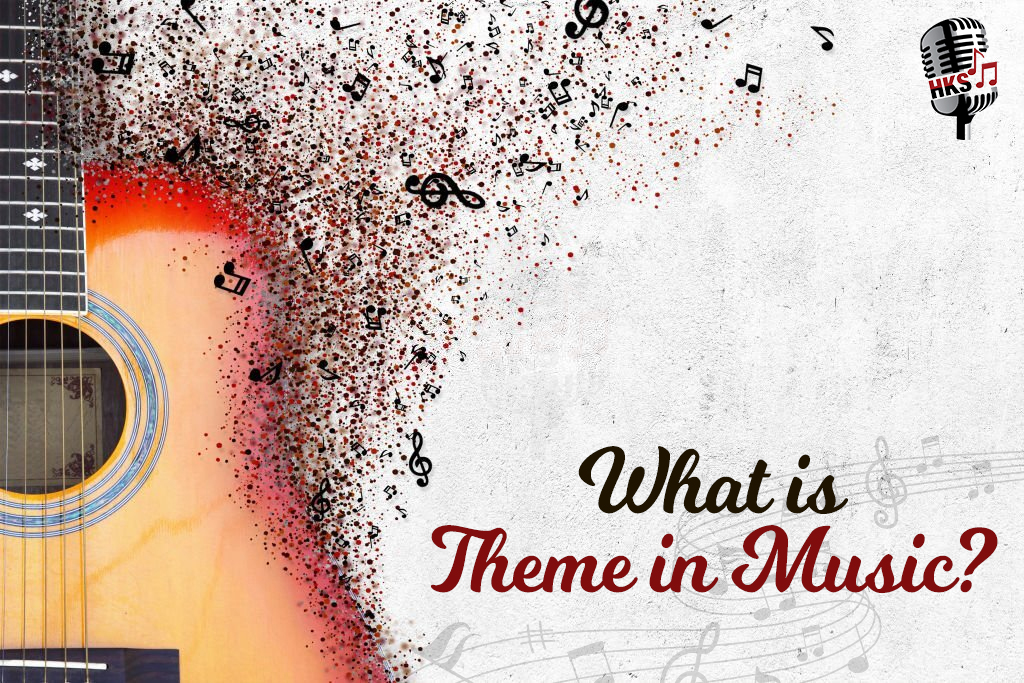Black Friday Store Wide Sale | 35% Off | USE COUPON CODE - BLACKFRIDAY35

What if you asked someone if they liked a song or not?
And what if their simple answer, in a nutshell, is, "I liked the idea of it."
If they liked the concept of the song: they appreciated its lyrics, melody, harmony, rhythms, and overall musical structure of the piece. Don't worry! We'll explain the whole deal further.
What Is It Exactly?
A theme in music refers to a recurring musical idea or motif used to unify a composition or piece of music. Themes can consist of a few notes, a melody, or a chord progression and serve as the foundation for the rest of the music. They can also be transformed, developed, and manipulated throughout the piece to create structure and interest.
For example, a song might have a theme of love, heartbreak, or political protest, and the musical elements of the song will reflect and support that theme.
A Theme In Classical Music And Pop Music
Classical music often distinguishes movements or sections within a more significant work. For example, a theme is often referred to as a "subject," and the process of transforming and developing a theme is called "theme and variations." This is a form where the composer takes the original theme and creates new versions, each one changing in some way, such as by adding new harmonies or rhythms, transposing it to a different key, or fragmenting it and reassembling it in a different order.
In popular music, themes are often used in songs to create memorable melodies that listeners can easily recognize and recall. Themes can be more implied or less structured, but they still serve as a unifying force in the composition.
An excellent example of a pop song with a clear theme is "Yesterday" by The Beatles, where the melody and chord progression of the song's verse and chorus serves as the song's theme.
What Are These Basics: Harmonies, Melodies, And Stuff?
"Harmony" combines multiple musical notes played or sung simultaneously to create a chord. Chords provide a supportive background for a melody and add color and depth to a composition. The study of harmony involves the rules and principles for combining chords and chord progressions to create musical structure and expression.
"Rhythm" refers to the pattern of beats and pauses in a piece of music. The pulse drives the music forward and gives it a unique feel and character. Different types of music have distinct rhythms, and one can use them in their style, which can significantly impact a piece's overall style and feel.
"Music composition" refers to creating a piece of music, including writing the melody, harmonies, and rhythm and arranging and orchestrating the music for different instruments and voices. A music composer may work in any number of musical styles and can be involved in creating music for a wide range of purposes, including classical music, film scores, pop songs, and more.
"Melody" refers to the main tune or tune of a piece of music. The linear aspect of music creates the main shape and structure of the piece and is typically what people remember and hum when they hear a piece of music. A good melody is often memorable and can evoke strong emotions in the listener.
To create an overall effective-hearing experience, these components add essential value to any song. It might seem easy, but more complicated; it requires proper management and extra care to handle the aesthetics.
How Long Is A Theme?
In music, the length of a theme can vary greatly. For example, a theme can be a few measures long or extended for several minutes. The length of a theme is determined by the composer and is based on the musical idea they want to convey, the structure of the piece, and the intended overall effect.
What Role Does Music Theory Play In Creating A Song And Karaoke?
Music theory helps create lyrics, ensuring they are in key and rhythmically correct.
It plays a significant role in karaoke and in creating karaoke tracks. It provides the foundation for understanding and analyzing its elements, like melody, harmony, rhythm, and form. One can apply this understanding to creating karaoke tracks, allowing for the removal of vocals or the creation of instrumental accompaniments that accurately reflect the original song.
Summary
Providing the musical foundation for any work, and evoking emotions, often to tell a story or communicate an idea, regardless of the genre or style, the theme is an essential element of musical composition and often gives a piece its unique character and emotional impact.
As explained above, there are n-numbers of ways to generate these themes by tweaking the scale, beat, rhythms, and tempos. But every alteration you make should be in a way that represents the main idea of the whole music composition for someone to like it.
Being able to tell a story through your lenses, be it in music or writing or any art form, are one-of-a-greatest gifts beseeched to anyone, but what's more, is being able to weaponize it. To use it the right way.








Deepak Dawadi
2 years ago
Thanks for putting these out! A great starting place to understanding music themes :)
Hemant Bhanushali
2 years ago
Well written!! For me, a theme can create a sense of unity and coherence within a musical composition, and it can also help me establish the mood or emotional tone of the piece.
Uttara Joshi
2 years ago
The theme in music is like the backbone of a song that ties everything together. For me also, the theme should be excellent.